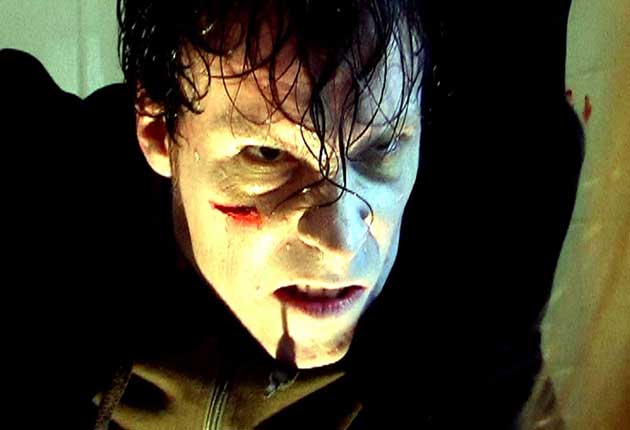How to make a movie for £45
Marc Price, director of the no-budget zombie film Colin, which opens in cinemas this weekend, reveals his secrets

Your support helps us to tell the story
From reproductive rights to climate change to Big Tech, The Independent is on the ground when the story is developing. Whether it's investigating the financials of Elon Musk's pro-Trump PAC or producing our latest documentary, 'The A Word', which shines a light on the American women fighting for reproductive rights, we know how important it is to parse out the facts from the messaging.
At such a critical moment in US history, we need reporters on the ground. Your donation allows us to keep sending journalists to speak to both sides of the story.
The Independent is trusted by Americans across the entire political spectrum. And unlike many other quality news outlets, we choose not to lock Americans out of our reporting and analysis with paywalls. We believe quality journalism should be available to everyone, paid for by those who can afford it.
Your support makes all the difference.On Friday, my zombie movie Colin opens in cinemas. It's been a long journey to the screen which took off when I travelled to the Cannes Film Festival for the first time this year.
As I sat in a bar cradling a very expensive French beer, Helen Grace, the sales agent responsible for dragging us to La Croisette, slid a publication across the table for me to read:
Film: Colin
Director: Marc Price
Budget: $800,000
I didn't really know what to say. I remember thinking that if people thought that this was our budget, when they saw the film they'd think that we'd spent the money buying a house instead. This prompted a question that had never been asked from Helen's camp before: How much did you spend?" I shrugged my shoulders: "Dunno, about £40/£45".
I was in my overdraft when we started making Colin and I'm still in my overdraft now. The idea of spending money to travel to a festival where, realistically, we wouldn't stand out from the other 7,999 movies in the film market had been questionable at best. My girlfriend found free flights to Cannes and convinced me that it would be an experience worth having.
The first day, I managed to get a ticket for the opening ceremony – which meant cobbling together the necessary formal evening-wear. I resorted to borrowing trousers from my ridiculously skinny friend and, with no hope of managing to do the fly up, I tied them to my waist using a belt and shuffled along the red carpet hoping they wouldn't fall down. I wasn't so much interested in the opening ceremony as the chance to see the new Pixar movie Up. The risk of publicly exposing myself was absolutely worth it – the movie was awesome.
But back to business. Helen, being a shrewd sales agent, knew that it would be difficult to sell the film for a reasonable up-front price if the buyer knew it only cost the equivalent of $70 to make (not exactly our "budget", the plan was to make the film without spending any money at all, so by spending a single penny we were at least 100 per cent over budget)
Knowing it would be impossible to hide the fact that our cheap little movie was shot on a camcorder, I always felt quite strongly about being open with audiences and distributors about this from the outset. This way, we would lower their expectations and allow them to watch the movie in an appropriate frame of mind. The difficult part was finding an answer to the question: "So what did you spend the money on?" It was always a case of what we had available to us rather than what we paid for.
When I first made the move from Swansea to London, I slept on an actor friend's sofa. As a result, the first group of people I met were also actors. As much fun as I had had making short movies back in Wales, it had been a case of casting friends not actors. Through this introduction to the city, I was presented with a wealth of acting talent from prestigious drama schools such as Bristol Old Vic, Lamda and Rada.
I also gained knowledge of some fantastic locations in Tooting and Colliers Wood in south London, most of which were a short walk from our house – handy when your actors have been made up to look like their limbs are falling off. Critically, I also discovered the best times to shoot scenes without the general public wandering into our shots.

Watch Apple TV+ free for 7 days
New subscribers only. £8.99/mo. after free trial. Plan auto-renews until cancelled

Watch Apple TV+ free for 7 days
New subscribers only. £8.99/mo. after free trial. Plan auto-renews until cancelled
My favourite location was Rowley Way (just off Abbey Road near Kilburn). I taught low-budget film-making techniques to students in the area and one of them, who has a small part in Colin, insisted that I take a look. It was dead quiet – not a person in sight. Rows of stacked terraces extending into the distance made it perfect in both a practical and atmospheric sense.
With everything sorted with regards to locations and actors, we were ready to tell our story, a movie with a solid emotional core, as well as the fun stuff zombie fans expect to see. We felt that it was important to try and do something different with the genre. Colin tells the story of a man bitten by a zombie, who dies and returns from the dead to wander a suburbia in the throes of a cadaverous apocalypse. The entire story unfolds from his perspective.
Everyone involved in Colin kept their eyes peeled for any interesting objects that could be used as makeshift weapons. The more elaborate the prop, the better our production values (or so we hoped). We ended up with some interesting and quite random objects including a shopping trolley, a box of crockery and a moonface-carnival mask.
What we didn't have at our beck and call were talented make-up artists. A message was put out through the industry networking website www. mandy.com, asking for volunteers who would have the creative freedom to make any zombie they liked provided that they use their own equipment and could create the zombies necessary for the scene that we were shooting on any given day.
Equipment? The beauty of where we are technically today is that it is possible to get your hands on the equipment needed to make a film – or at least familiarise yourself with the processes involved. Mobile phones record video in various degrees of quality while desktop PCs have basic editing software with their operating systems.
We had to embrace the flaws that came with our equipment particularly when it came to sound design. Every piece of audio was recorded using the onboard camcorder microphones. Chewing-flesh noises were achieved by munching packets of Fruit Pastilles, mixed in with the sound of cracking egg shells. Breaking bones were created by grinding pasta shells while crashing cars were several takes of a tool box slamming into a kitchen cupboard. The most exciting breakthrough came during bonfire night when we recorded a few hours of fireworks and used the distant bangs to replicate gunshots.
One of our sequences called for a broad daylight street skirmish between a group of zombies and an aggressive bunch of humans wielding various household items that have been perverted into killing implements. The initial idea for the scene was to have around 60 people in total – half of them zombies, the other half humans. When it came to shoot the scene, though, we could only muster 15 to 20 bodies.
Film is essentially about problem solving so we went to work. How did we make it still look and feel like a large set piece? We selected the actors who were there to play humans and had them fill the frame and stand towards the back of each shot. Then we had the actors who were playing zombies stand closer to the camera so that their heads were out of shot and we couldn't see their make-up. We asked them to run back and forth during the shot. We also spotted a few kids who had shown up to watch us work and asked them to run back and forth, so close to the camera that you couldn't tell they were children, just a fast-moving blur of clothes. If you cut enough shots like this together you hopefully end up with a busy scene that has plenty of visceral energy.
We hit panic stations when a lone policeman arrived in response to a report of a riot taking place. It turns out that 15 to 20 people can make an awful lot of noise. False alarm or not, most police officers are not particularly happy to find a film shoot taking place without permits, let alone one causing as much disruption as we were. I was shooting the movie on a very small camcorder so we looked like what we were... a bunch of friends making a film at the weekend. Luckily, the policeman had a sense of humour. Instead of confiscating our equipment, he asked for our permission to take some photos and wandered off looking pretty happy with himself.
Following the media interest at Cannes, we've been fortunate enough to secure a distribution deal for Colin that means it has both a theatrical and DVD release. All I've ever wanted is for the film to be seen (and hopefully enjoyed) by as many people as possible, but this is beyond any success I ever envisaged for the film. If luck comes in a quota I've probably had my share.
'Colin' is out in cinemas on Friday and on DVD on Monday (Kaleidoscope). There will be a special screening followed by a Q&A with Marc Price at Prince Charles Cinema, London WC2, on Friday at 9pm
Join our commenting forum
Join thought-provoking conversations, follow other Independent readers and see their replies
Comments